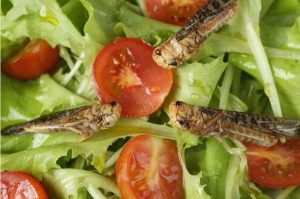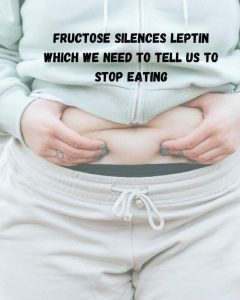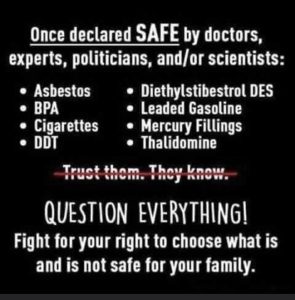
Net Zero’s artificial food crisis paves the way for ‘future foods’

Net Zero rules employed by the United Nations, European Union, and domestic political parties across the world are expected to cause the imminent shutdown of high-production farmland, or at least, significantly reduce its capacity.
Yes, after centuries of perfecting food growing techniques, a bunch of bureaucratic regulators have decided to deliberately massacre the industry. Farmers in the Netherlands are first on the chopping block, with their historic estates being forcibly purchased by the State in what amounts to a complete erasure of private property rights.
As these policies are primarily targeting the world’s food bowls – the Netherlands, Canada, Sri Lanka, the United States, and Australia – the global agricultural supply chain can expect a prolonged artificial shortage of critical food items in the near future.
Food shortages, where demand remains the same or rises with population growth, results in the rapid increase of cost. Add to this problem huge changes to fertilisers, transport, red tape, pesticides, biosecurity, packaging, and labour.
We are already seeing the early stages of these policies play out in supermarkets across the Western world where gaps are appearing on the shelves, the diversity of products is in swift decline, and of the food that remains – its price is becoming a financial burden, even to the lower-middle class who have not struggled to afford food for three generations.
How convenient that some corporate and ideological partners of the international bureaucracies pushing these Net Zero policies are waiting in the wings with ‘planet saving’ food products!
In a world where fresh food is plentiful and cheap, no one would dream of sniffing around a lab for their next meal, but poverty is a powerful motivator to accept barely palatable crap sweetened with false virtue. Instead of counting calories, the next generation will be calculating their carbon footprint at the dinner table.
Keep in mind that this is a menu for the poor. Fresh food, real meat, and French wine will continue to fill the kitchens of the ruling classes. It’s the family of five squished into a city apartment, unable to turn the air-conditioner on for more than an hour a day, that will be faced with a range of cheap, depressing items at the supermarket.
The two emerging food groups for the latter half of this century are bugs and printed food – both of which are frequently grown in a lab.
Astonishingly, it is the ‘bug’ portion of this food pyramid that is rapidly making its way into the European shopping trolley, with crushed bug bits being approved as a filler or replacement for wheat. Whoever made that decision should be sat down in front of a plate of crickets and told to mash them up by hand before eating a loaf of bread made from the bits. Let’s see if they really think bug-meat is an appropriate substitute…
Within a few years, it will be extremely difficult for the average European to ensure that their meals are bug-free. Just as our food is currently tainted with chemicals and additives we’d be unlikely to pick if we knew what they were – the future of bread, flour, pasta, and sauces is sealed.
Nothing says ‘civilisational success’ quite like eating the critters that crawl over our mounting piles of garbage.
And yes, these bugs are grown in the lab, but in some ways this is worse. They are fed on a diet of chemicals, locked in tiny boxes, killed en masse, crushed up, and fed to us. At what point do you say that we had it ‘better’ thousands of years ago, salivating over a freshly roasted mammoth steak?
Vegans and vegetarians will want to avoid the eating of sentient insects. (Or maybe not? Who knows… Might be worth laying some money down on that.)
If these two groups of picky eaters remain true to their moral core, they will find their shopping experience rather patchy. The world’s farms are shrinking and the costs of transporting produce around the world is becoming fatally high. At some point Gen Z will realise that their local fruit market was put there by jumbo jets, ships, and vans. What sort of selfish vegan would insist a nation waste their carbon footprint flying fruit and vegetables in from another country? That would be literally destroying the world.
The supply problems of fresh produce may even be accidental, caused by incompetent governments failing to realise that the forced closure of oil and gas will create transport price hikes that no farmer can sustain and no customer can carry.
Regardless of how events play out, vegans and vegetarians will be offered lab-printed food as their ‘cheap’ and ‘convenient’ alternative. You can still have those cashews you love… We printed them out of chemicals for you this morning. They look a bit like a downloaded TV show from the early 2000s, but we promise they taste practically the same!
To compensate, there is a new ‘fad’ mulling around in its infancy. 3D-printed food is somewhat of a mixed bag. It covers everything from what a Mars expedition might expect – up to 5-star dining – and everything in-between. There are genres of 3D-printing, which vary wildly in quality and appeal.
At the high-quality end we have ‘fun food’, where 3D-printed food functions as a gimmick for restaurants. One Italian pasta company has been printing elaborate pasta shapes that serve as the centre pieces of dishes that are impossible to create with real pasta.
This variety of 3D-printing is a quite palatable, as the base pasta mix is still handmade and then fed through printing machines. There is no doubt a future in this type of elevated cuisine in the same way that the Industrial Age led to factory-cut food shapes and the mass production of pasta.
On the more futuristic end of the scale, we have Tokyo’s Sushi Singularity. It describes its mission as:
‘Beyond the future of sushi. A world that sees sushi going digital and linked with the net will come about. Two revolutions are envisioned: 1) Sushi will connect people around the world, and will be produced, edited, and shared online in the form of “new sushi”. 2) Sushi combined with biometrics will enable hyper-personalisation based on biometric and genomic data. Sushi will break away from conventional concepts of food and be continually revised and updated at exponential speed! Humans know nothing about Sushi!’
These guys have a full futuristic enterprise going on where the dream is to digitise food, build a food database, transmit food digitally, and then reprint it.
According to American Scientist:
‘Their 3D-printed food experiments include cell-cultured tuna in a filigreed cube, and octopus sculpted in a honeycomb lattice with negative stiffness. Most of their printing appears to be extrusion-based, using components that undergo computer-controlled mixing to generate the right flavours and textures. They also use a powder-based printing technique that incorporates high-powered lasers to fuse powders together.’
Forgive me if I prefer a quick trip to Croatia for a bit of freshly poached octopus or lightly fried calamari on the Ligurian coast. Some people like future-foods, I prefer old-style simplicity.
Other 3D-printing restaurants focus on meat-replacements which, more often than not, are actually printed from lab-grown fat and sinew. While the first form of 3D-printed restaurant food is about putting on a flashy, futuristic show, meat-replacements are more ‘on vibe’ with saving the planet. It’s about ‘responsible eating’ and finding ways to make the otherwise unpalatable tolerable. If we are honest, it also provides a way for vegetarians and vegans to cheat on the whole no meat pledge.
There is likely to be a backlash to all the bugs and sci-fi food if it goes from being a market option to a government-mandated initiative, as we have seen with electric vehicles. People may start trying to grow their own food – or at the very least, barter outside the government’s field of view with those who have the means to grow food. In some regional communities, this is already happening. Fresh produce is being shared amongst farms away from the greed of supermarket oligarchies and excessive agricultural regulators. If you ask most people whether they’d rather eat something grown in a lab or trust their mate farmer Jeff and his watermelon crop well… I know what I’m eating.
As we watch the wilful and reckless destruction of the world’s agricultural heartlands, we should ask ourselves, ‘Is this progress? Do we want politically-aligned laboratories controlling food production?’
A recent article on the topic writes:
‘Some believe that 3D-printed food could be the answer to global issues such as world hunger. It’s projected that the globe’s population will reach about 8 billion by 2025, which will put a heavy strain not only on food producers but also on food sources themselves. 3D printers can make use of abundant sources of nutrients, such as algae, and transform them into appetising foods that can be mass-produced fairly easily.’
Hmm… Maybe we should all join the farmers’ protests in the Netherlands instead before we reach the point of 3D-printed algae.
Beat The Belly Bulge

Leptin is a hormone that works as an appetite suppressant. When everything functions properly, it helps you maintain a healthy weight by balancing the amount of food you eat with how much fat you have.
High leptin levels signal your brain that you’re full, which makes you less hungry.
But what if that doesn’t happen? What if your body becomes resistant to leptin?
Sometimes your brain tells you to eat more even when you have plenty of leptin and lots of fat cells. That’s called leptin resistance.
Leptin resistance can lead to overeating and excess fat storage.
Other health problems can mess with your leptin signaling too. For example, chronic inflammation and high levels of triglycerides can make it harder for leptin to cross the blood-brain barrier.
So if you have trouble losing weight, leptin AND insulin resistance can be playing a role.
RFK Jr On Vaccine Damage

Statement from Robert F. Kennedy, Jr. on vaccines. He points out that chronic childhood ailments surged in 1989, shortly after the quantity of vaccines recommended for children skyrocketed. My son had his first couple of vaccines and then I quit so he wasn’t part of this surge, thank heavens. RFK, Jr. said:
“This is a chronic disease epidemic. I have six kids. I had eleven brothers and sisters. I had over fifty cousins. I didn’t know a single person with a peanut allergy. Why do my kids all have food allergies? Because they were born after 1989. If you were born prior to 1989 your chance of having a chronic disease, according to HHS, is 12.8%. If you were born after 1989 your chance of having a chronic disease is 54%. What are they? They’re the neurodevelopmental diseases; ADD, ADHD, speech delay, language delay, tics, tourette syndrome, ASD/autism. The autoimmune diseases; guillain barre, multiple sclerosis, juvenile diabetes, rheumatoid arthritis. The anaphylactic diseases; food allergies, rhinitis, asthma, eczema. All of these exploded in 1989. Congress order the EPA to do a study to find out what year the disease #epidemic started, and the EPA did that study. They said it started in 1989. There’s lots of culprits, many new things. We have cell phones, PFOA [toxic industrial chemicals], ultrasound, glyphosate [RoundUp] etc. Our kids are swimming around in a toxic soup. We’re not saying all of those illnesses came from vaccines. But there is no intervention that is so exquisitely and precisely timed as what happened when we went in 1989 and changed the vaccine schedule, and raised the levels of aluminum and mercury – tripling and quadrupling them – and went from the three vaccines I had [as a child], to the 72 that my kids had, and the 75 that kids will have next year.”
The Rape Of US Justice

Walking

Never Stop Questioning Authority

Rely on your own observation and knowingness rather than ‘authorities’.
Passing Trays
A day in the life!
Thanks Karen Hardy and Whitney Koenig!
Yesterday I overheard a nursing student snark, “Yeah, this is why I’m in nursing school – so I can pass trays.”
And if I hadn’t been up to my eyeballs in other things to do for my patients, I would have stopped and said: You’ve already missed the point entirely. I’m not sure why you DO think you’re here. If you hope to be a good nurse (or coworker, or person with a heart), you’re going to spend the majority of your working life doing things you SO mistakenly think are beneath you. You are going to pass trays with a smile – excitement even, when your patient finally gets to try clear liquids. You will even open the milk and butter the toast and cut the meat. You will feed full-grown adults from those trays, bite by tedious, hard-to-swallow bite. You will, at times, get your own vital signs or glucoscans, empty Foley bags and bedside commodes without thinking twice. You will reposition the same person, move the same three pillows, 27 times in one shift because they can’t get comfortable. You will not only help bathe patients, but wash and dry between the toes they can’t reach. Lotion and apply deodorant. Scratch backs. Nystatin powder skin folds. Comb hair. Carefully brush teeth and dentures. Shave an old man’s wrinkled face.
Because these things make them feel more human again. You will NOT delegate every “code brown,” and you will handle them with a mix of grace and humor so as not to humiliate someone who already feels quite small. You will change ostomy appliances and redress infected and necrotic wounds and smell smells that stay with you, and you will work hard not to show how disgusted you may feel because you will remember that this person can’t walk away from what you have only to face for a few moments. You will fetch ice and tissues and an extra blanket and hunt down an applesauce when you know you don’t have time to. You will listen sincerely to your patient vent when you know you don’t have time to. You will hug a family member, hear them out, encourage them, bring them coffee the way they like it, answer what you may feel are “stupid” questions – twice even – when you don’t have time to.
You won’t always eat when you’re hungry or pee when you need to because there’s usually something more important to do. You’ll be aggravated by Q2 narcotic pushes, but keenly aware that the person who requires them is far more put upon. You will navigate unbelievably messy family dramas, and you will be griped at for things you have no control over, and be talked down to, and you will remain calm and respectful (even though you’ll surely say what you really felt to your coworkers later), because you will try your best to stay mindful of the fact that while this is your everyday, it’s this patient or family’s high-stress situation, a potential tragedy in the making.
Many days you won’t feel like doing any of these things, but you’ll shelve your own feelings and do them the best you can anyway.
HIPAA will prevent you from telling friends, family, and Facebook what your work is really like. They’ll guess based off what ridiculousness Gray’s Anatomy and the like make of it, and you’ll just have to haha at the poop and puke jokes. But your coworkers will get it, the way this work of nursing fills and breaks, fills and breaks your heart. Fellow nurses, doctors, NPs and PAs, CNAs and PCAs, unit clerks, phlebotomists, respiratory therapists, physical and occupational therapists, speech therapists, transport, radiology, telemetry, pharmacy techs, lab, even dietary and housekeeping — it’s a team sport.
And you’re not set above the rest as captain. You will see you need each other, not just to complete the obvious tasks but to laugh and cry and laugh again about these things only someone else who’s really been there can understand. You will see clearly that critical thinking about and careful delivery of medications are only part of the very necessary care you must provide. Blood gushing adrenaline-pumping code blue ribs breaking beneath your CPR hands moments are also part, but they’re not what it’s all about.
The “little” stuff is rarely small. It’s heavy and you can’t carry it by yourself.
So yes, little nursling, you are here to pass trays.
Foot Fungus
A renowned professor at The Department of Medical Microbiology and Infectious Diseases has confirmed that foot fungus is actually growing faster thanks to tea tree oil and even coconut oil.
I have heard good reports about Sodium Bicarb and Melaleuca Honey.
Asprin and Enzymes
- There was a massive discrediting propaganda campaign hurled at aspirin by Big Pharma fifty years ago when it came out with expensive and dangerous non-steroidal anti-inflammatories (NSAIDs)
- Aspirin is a staple medicine that is frequently recommended as a remedy to control inflammation and prevent blood clots. It could have helped limit the pandemic death toll, had it not been downplayed and ignored
- According to research published in April 2021, aspirin reduced COVID-19 patients’ need for mechanical ventilation by 44%, ICU admission by 43% and mortality by 47%
- Proteolytic enzymes like lumbrokinase, serrapeptase and nattokinase are safer and perhaps even superior choices to aspirin for its anticlot properties. These enzymes, when taken on an empty stomach, act as natural anticoagulants by breaking down fibrin
- Proteolytic enzymes may also be helpful for long-COVID. Researchers have found that people who die from COVID have extensive lung damage caused by persistent virus-infected cells that cause scar formation. Proteolytic enzymes can help dissolve this scar tissue, as fibrin is a primary component
https://articles.mercola.com/sites/articles/archive/2023/05/15/aspirin-for-covid.aspx
